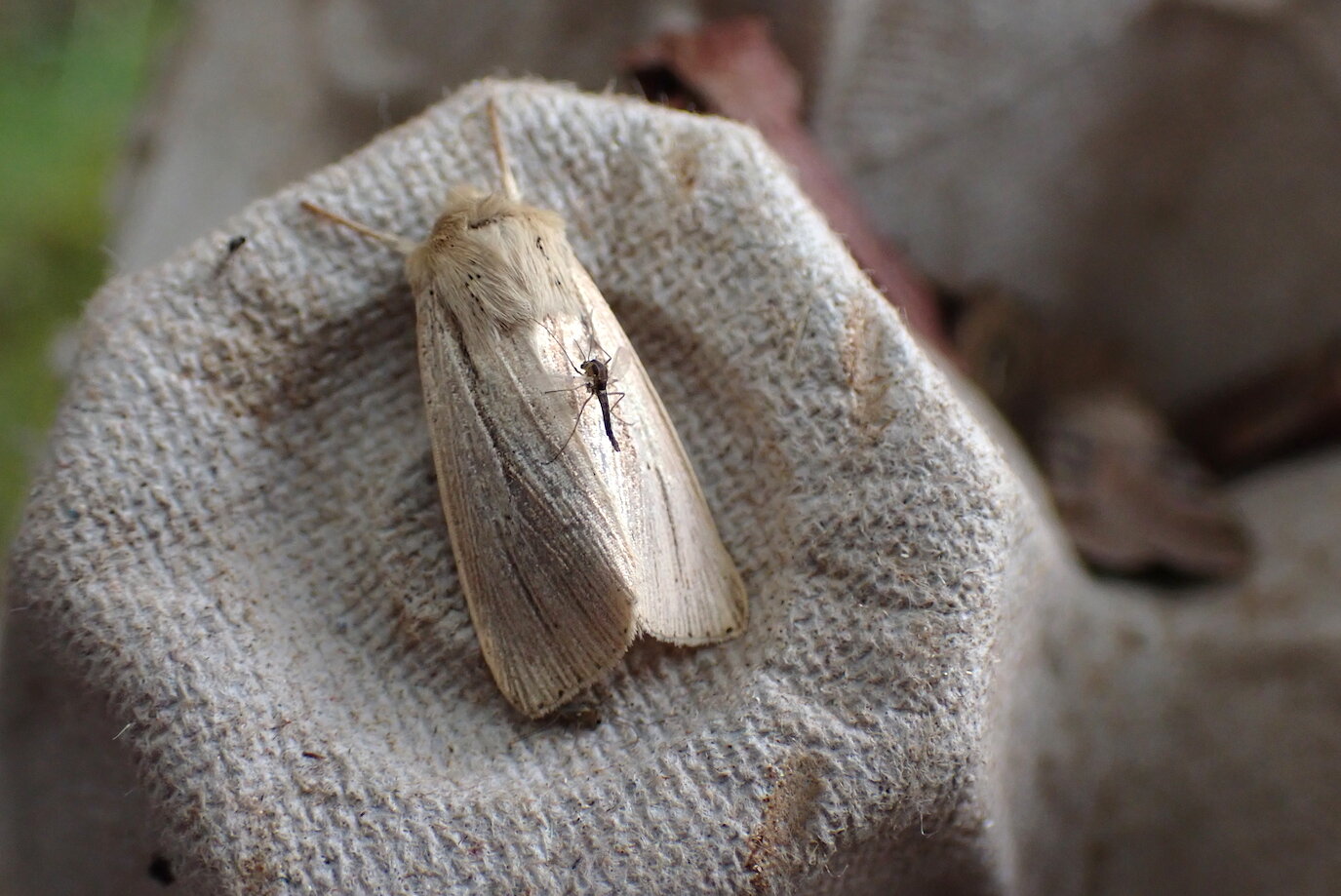Mothscape
A brief glimpse of the “mothscape” around Knockvologan and Tireragan on 18th-19th August 2021.
There are about 2500 moth species in the UK and although there are more day-flying moths than butterflies, they often go unnoticed or at least unrecognised. The majority are of course mainly nocturnal. This makes them more difficult to study or admire but despite this we know a great deal about them. There are various ways of learning about moths in their various life-stages – egg, larva (caterpillar), pupa, adult. The Victorian lepidopterists were very skilled in a range of methods and a great deal of what we know comes from their work. It is a shame that many of these older methods have fallen out of wider use, having been largely overtaken by the use of modern light traps. These can be a very efficient way of quickly sampling some moth species in an area (there are some species which rarely if ever come to light). But, like our house-, street-, car-, commercial- and countless other forms of modern lighting (which most of us use every day without a thought), they interfere with the moths’ natural activities so must be used with care. Moth traps do at least have the potential to provide some useful information, unlike the other forms of artificial lighting.
Other methods of study include searching for and rearing eggs and caterpillars or using a rich, sweet mixture of “moth sugar”, which many moths find to be an irresistible food. “Sugar” is most effective at times when the natural attractions of nectar and pollen are scarce. The moths come and go as they please and the sugar may help them through lean periods, in the same way as nuts and seeds with garden birds. Some of these alternative methods of study may be more difficult, specialised or time-consuming compared with the use of a light trap but can provide a deeper insight into the lives of the insects.
The caterpillars of many of the smaller moths (often called “micro-moths”) feed, and in some cases pupate, within the thickness of a leaf and the “mines” they create in the process can provide useful information about their lives and distribution. Studying caterpillars and mines makes us pay attention to the plants being used, leading us into an appreciation of the wider environmental or landscape context.
Most moths spend most of their lives as egg, caterpillar or pupa so any knowledge about these stages is important. Anyone looking closely at these earlier stages may make new discoveries but will, before too long, certainly encounter an intrinsic part of moth-life - and one which is rarely evident from a light trap – parasites! These are mostly “wasps” of various types, often very tiny. Parasitism in moths is a vast and relatively little-studied area but, as with plants, represents another crucial ecological connection.
On this occasion, having only a couple of nights available to us, we did use a small light trap for a glimpse of what was around Knockvologan and Tireragan in early autumn. Still, whilst walking to our chosen trapping location in the oak wood we kept our eyes open and saw interesting things: a spectacular caterpillar of the Grey Dagger moth which had attached itself to a birch leaf with silk – wisely, as the branch was hanging over a burn!
We found some tiny mines of micro-moths in oak and birch leaves. The tiny adult moth of the one in oak – Heliozela sericiella – cannot be told apart from two other species of Heliozela but the mine is unique and therefore identifiable.
Another treat was an extraordinary troop of sawfly larvae feeding together on the edge of an alder leaf. As we approached for a closer look, they instantly and in perfect synchrony raised their tails in defence!
After our efforts to reach the large oak tree in the ancient wood on the steep slope and carefully placing the trap, we hoped that after dark the canopy would be visible from home. For a while there was some doubt whether the automatic mechanism had switched on the light, but later in the early hours, against the black landscape a green glow could be seen - success! In the morning we would have moths.
The table shows the moths we saw and the main foodplants of their caterpillars. Finding out what plants the moths depend on always adds interest – I have become aware of numerous plants which I didn’t realise occurred near where I live by finding the moth first.
The list of foodplants fits well with the area – most are common and widespread but the beard lichens (used by the Dotted Carpet caterpillars) was a pleasant reminder of the presence of clean air and old trees. To an experienced eye, the list of moths could perhaps be read as an expression of the landscape – maybe a sort of “mothscape”.
Chris Austick has lived and worked as a baker and bus driver on Mull for 15 years and have been a keen amateur naturalist since childhood. He seems to be drawn to the more obscure corners of nature and the leaf-mining micro-moths are his current focus especially as they are so little-studied on Mull. Chris enjoys making new discoveries, particularly in ordinary places, and there is much scope for doing this with very small wildlife - in the last year or so his own modest garden has produced 14 moth and one butterfly species not previously recorded on Mull.


















